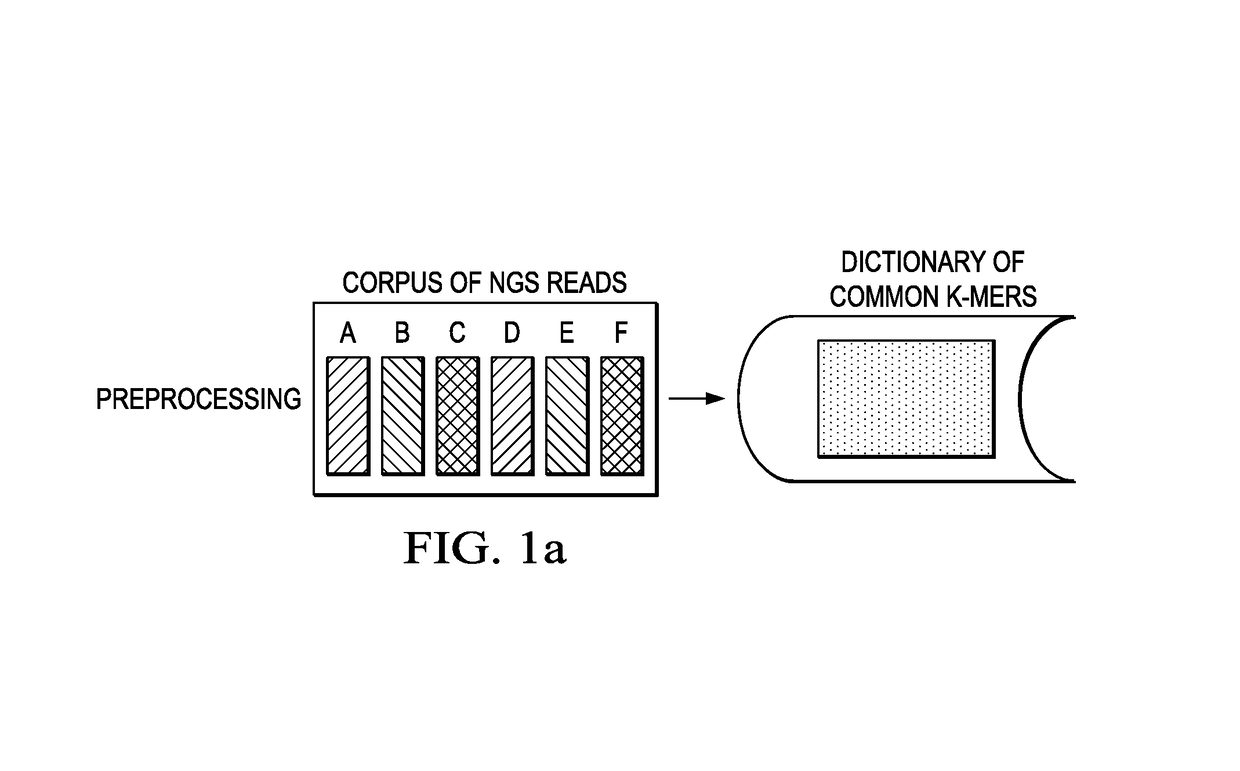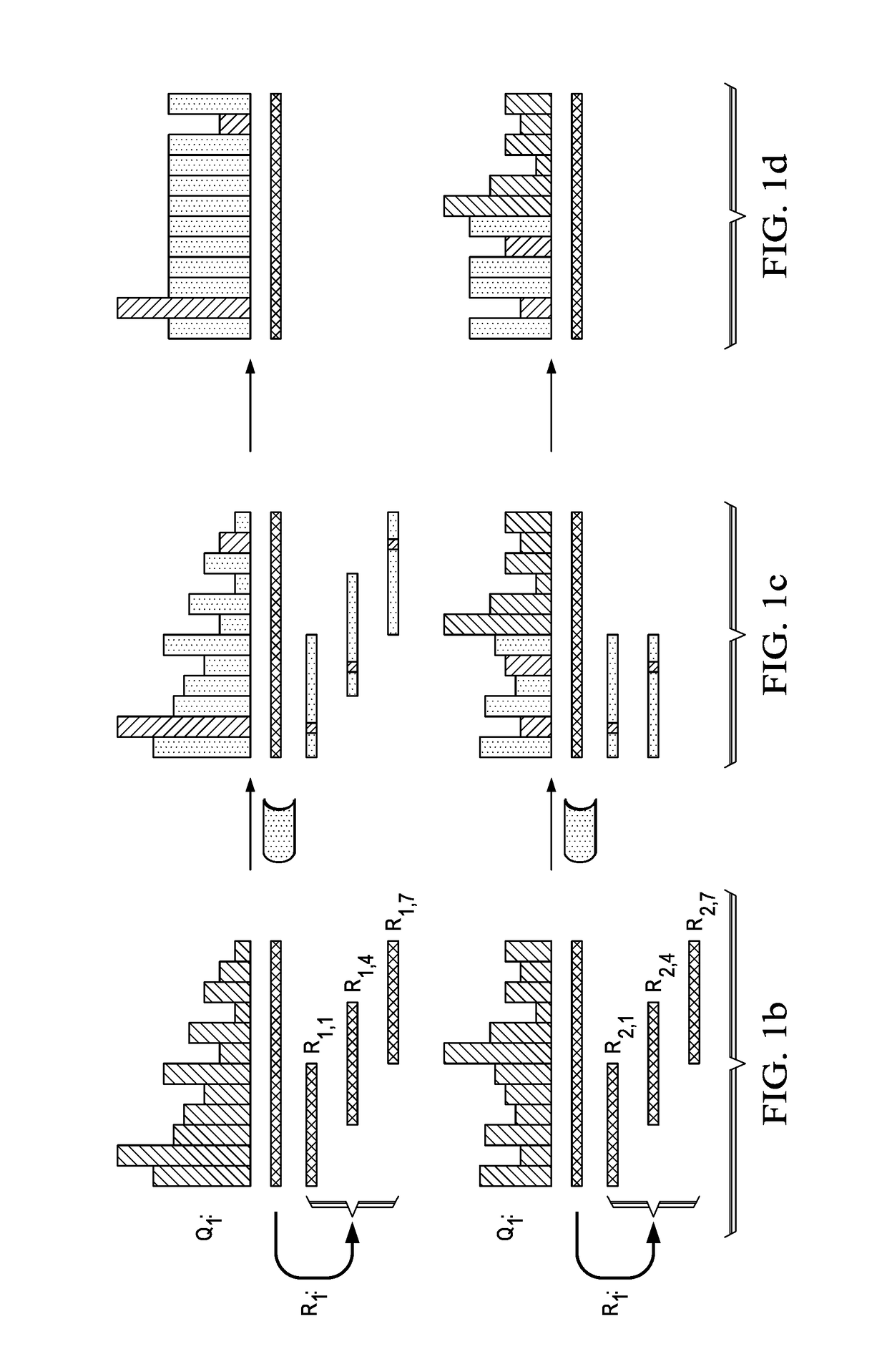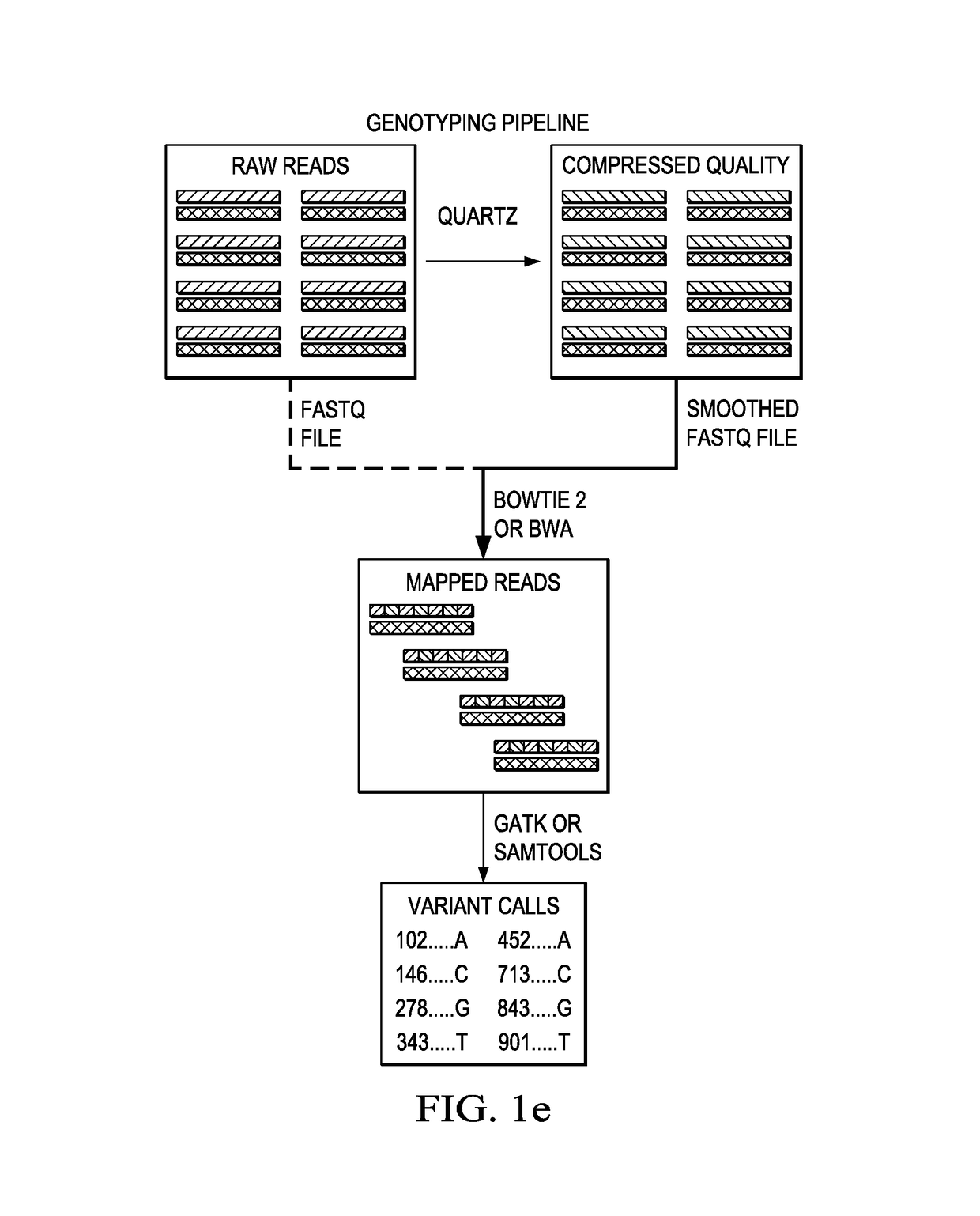Quality score compression for improving downstream genotyping accuracy
a quality score and downstream genotyping technology, applied in the field of next-generation sequencing (ngs) technologies, can solve the problems of less informative and useful quality scores, extremely low low confidence in their correctness, so as to improve the probability of multiple reads, the effect of less informative quality scores
- Summary
- Abstract
- Description
- Claims
- Application Information
AI Technical Summary
Benefits of technology
Problems solved by technology
Method used
Image
Examples
Embodiment Construction
[0020]For descriptive purposes, the compression tool of this disclosure is referred to as “Quartz” (“QUAlity score Reduction at Terabyte scale”), but this nomenclature is not intended to be limiting. Typically, the tool is implemented as computer software executing in one or more hardware processors. The computer software may be implemented as one or more programs, processes, instruction sets, execution threads, scripts, or the like.
[0021]According to this disclosure, the tool preferably compresses quality scores by capitalizing on sequence redundancy. Compression is achieved by smoothing a large fraction of quality score values based on the k-mer neighborhood of their corresponding positions in the read sequences. As is known, the term k-mer typically refers to all the possible substrings, of length k, that are contained in a string. In computational genomics, k-mers refer to all the possible subsequences (of length k) from a read obtained through DNA sequencing. As noted above, th...
PUM
 Login to View More
Login to View More Abstract
Description
Claims
Application Information
 Login to View More
Login to View More - R&D
- Intellectual Property
- Life Sciences
- Materials
- Tech Scout
- Unparalleled Data Quality
- Higher Quality Content
- 60% Fewer Hallucinations
Browse by: Latest US Patents, China's latest patents, Technical Efficacy Thesaurus, Application Domain, Technology Topic, Popular Technical Reports.
© 2025 PatSnap. All rights reserved.Legal|Privacy policy|Modern Slavery Act Transparency Statement|Sitemap|About US| Contact US: help@patsnap.com



